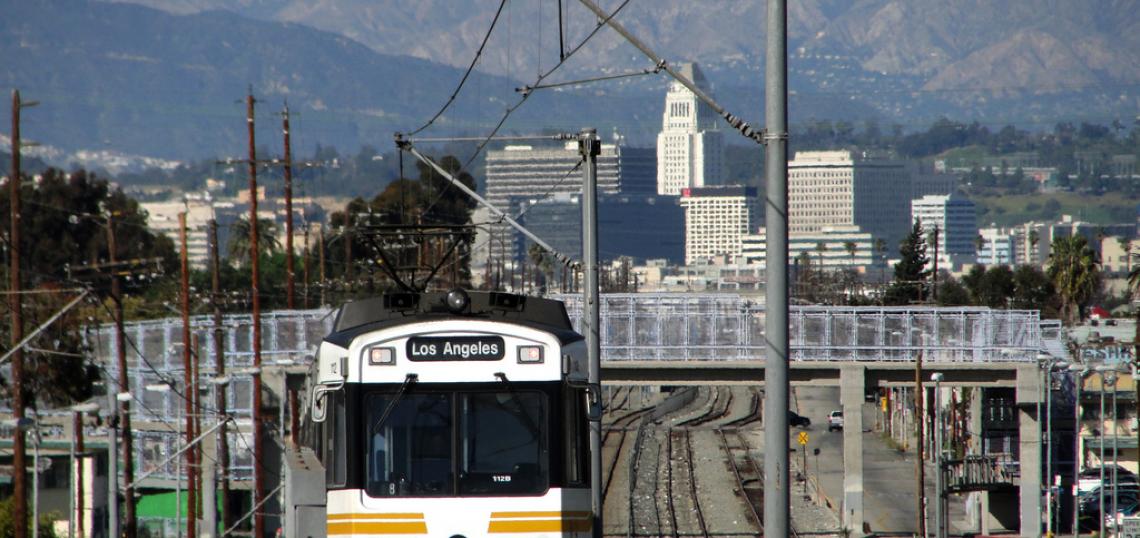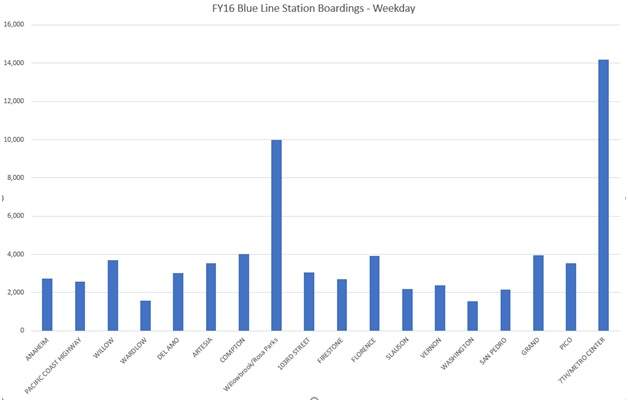As Metro embarks on the next phase of its rail expansion program, it faces calls from riders and members of its Board to make improvements to older pieces of infrastructure. The Blue Line, Metro’s oldest line, has seen increasing interest amid declining rider satisfaction and increasing trip times. The latest news on this subject came when Director Robert Garcia’s announced via Twitter that signal synchronization for the Downtown Long Beach segment of the route would be up and running by Fall 2017. Longbeachize notes that the long-overdue improvements will hopefully reduce delay on the last remaining stretch of the Blue Line where trains are still given the same priority as single-occupancy vehicles, which is to say none at all. Garcia, who is also the Mayor of Long Beach, believes the synchronization will reduce overall trip times by 10 minutes from the Downtown Long Beach loop to 7th Street/Metro Center in Los Angeles.
In a previous post, focus was given to one potential upgrade that would ease operational constraints on the Blue Line: rebuilding the segment of track shared by the Blue and Expo Lines in Downtown Los Angeles below street level. But that proposal is just one of many ways Metro could attempt to reduce end-to-end travel times on the 22-mile Blue line from about one hour to 47 minutes. Some of the others - such as the synchronized signals in Long Beach and a push to turn trains around faster at 7th Street - are already in progress. In July, staff will present an all-inclusive look at feasible infrastructure and service upgrade to the board.
One of the most intriguing possibilities from the Board’s February directive to improve travel times is an express concept. Between Washington Station in South L.A. and Wardlow Station in Long Beach, the Blue Line operates in a generous right-of-way that it inherited from its predecessor: the Pacific Electric Railway. In the modern era, two tracks are used by Blue Line trains while another one to two are retained by Union Pacific Railroad. Since the opening of Alameda Corridor freight trench in the early 2000s, UP traffic has been down along the route. Clearly, Metro sees a potential opening, as they’ve asked staff to come up with acquisition and remediation costs to add a third light rail track, and to develop an operational plan for express service.
At present, Metro’s rail lines all run on two tracks, and none run express despite the long distances that passengers have to travel in Los Angeles. The MTA experimented briefly with a Gold Line express to Pasadena before abandoning it due to passenger dissatisfaction. Without a passing track, the service saved just five minutes for express riders and increased wait times for everyone else.
While there is promise that the Blue Line could be successful with a third track for peak hour express service, it also bears considering that this trunk section of the route is already considerably faster than the portions within the downtown areas at either end. According to Metro’s timetables, trains average 17 mile per hour from 7th/Metro to Slauson versus 34 miles per hour between the Green Line and Wardlow Station. This is due in part to fewer at-grade crossings and the longer distance (about 1.6 miles) between stations on the south end of the route. As a result, achieving significant time savings through the proposed express service might require inordinately large gaps between station stops, effectively turning the Blue Line into something akin to a commuter rail line. Separating the stations that would get an express stop from those that wouldn’t also poses a challenge, due to the relative ridership parity along most of the trunk of the route.
Still, an effective proposal would have to eliminate all but a few stops. One option might be to retain a few high performers like Compton and Florence, and the transfer points at Willowbrook and, prospectively, Slauson. That would amount to an average distance between stations of three miles for the express portion - roughly the same spacing as as seen on the San Bernardino Metrolink line between Union Station and El Monte. Would that be enough to save 10 minutes though? Not without significant or total grade separations. As previously mentioned, trains typically go twice as fast through this segment as they do in either Downtown L.A. or Downtown Long Beach. If the downtown travel times remain unchanged, the express would have to average 55 miles per hour between Wardlow and Washington. Fortunately, this is why Metro is looking at improvements along the entirety of the line. If we go with Brian Addison’s estimate that signal synchronization in Long Beach will save a minimum of 5 minutes, rather than the 10 minutes promised by Director Garcia, the express only would need to average a somewhat more manageable 41 mph through the same stretch.
There is the potential for some more intricate system connections to be made as well. The West Santa Ana Branch has two proposed alternatives that would share right-of-way - but not track - with the Blue Line between Slauson and Washington. Director Garcetti added an amendment to the February motion that called for staff to report on the possibility of connecting the Blue Line tracks to the West Santa Ana Branch, allowing for express trains to travel directly to Union Station. At face value, by skipping the congested route through the Financial District, the Blue Line would likely save a significant amount of time. However, given that the express would operate in one direction at peak hours, it’s kind of a confusing concept. Blue Line passengers would come north from Long Beach in the morning, but bypass DTLA’s concentration of jobs in favor of its transfer hub. This would effectively force them to backtrack to the Financial District and the Civic Center, and, for points further west, to take Union Station’s more circuitous transfer to the subway. Riders would swiftly give back any minutes that they had saved on the trip up.
But that’s not to say that adding the connection between the Blue Line and the West Santa Ana Branch is completely without merit. The West Santa Ana Branch provides Metro an opportunity to grade separate more of the Blue Line, and allow for greater flexibility in future operations. This work would likely include moving the existing Slauson station north of Slauson, and running both lines in an elevated alignment up until just south of Washington station. Given that it would increase speed, improve transfers (especially for Slauson), and allow Metro to run Blue Line trains directly to Union Station in cases of extreme congestion, it would probably be worth designing the connection from the start.
The program of improvements Metro is considering has the potential to remake the Blue Line as we know it. What the board decides to move forward with will ultimately be determined by both available funding and the appetite of the directors to make riders endure disruptive construction conditions. Still, the renewed commitment to returning Metro’s busiest light rail line to its glory days is a promising sign in the early days of the Measure M era.
Scott covers transportation and governance issues from his home in Silver Lake. Follow him on Twitter @safrazie.
- Metro Archive (Urbanize LA)








